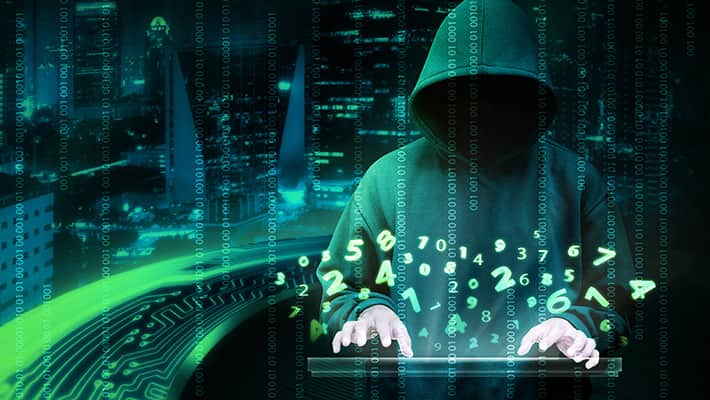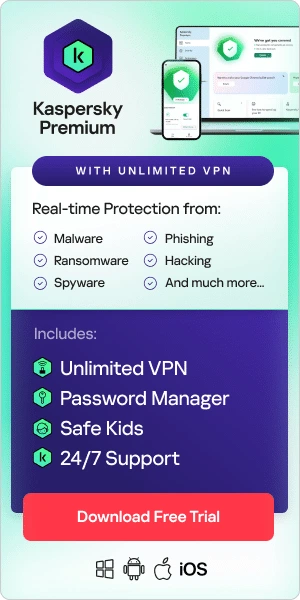
DarkHotel is a cyberattack group that engages in highly targeted malicious attacks. They seek to compromise and steal data from valuable targets like C-level business executives and other high-level figures. Classed by Kaspersky as an advanced persistent threat (APT), DarkHotel APT remains a major risk for governments, enterprises, and other institutions.
DarkHotel Definition
The name DarkHotel is derived from their unique method of tracking traveler’s plans and attacking them via hotel Wi-Fi. They have also been labeled as ‘Tapaoux’ due to the name of the Trojan they used in many attacks. Since their initial rising, they have scaled beyond business targets to attack politicians and more. With their long, mostly consistent history, they present a threat to national economies and politics across the globe.
DarkHotel has been known to compromise luxury hotel networks, then stage attacks from those networks on selected high-profile victims. At the same time, their botnet-style operations are used for massive surveillance or to perform other tasks. Other methods include DDoS (distributed Denial-of-Service) attacks or installing more sophisticated espionage tools on the computers of particularly interesting victims.
How Does the DarkHotel Threat Work?
The DarkHotel group appears to use a combination of spear phishing, dangerous malware, and botnet automation designed to capture confidential data.
As analyzed by Kaspersky’s Global Research and Analysis Team, DarkHotel utilizes layered attacks. Generally, each type of campaign they’ve used involved two malware infection stages:
- Initial bait for malware infection — to infiltrate devices and vet for high-value targets.
- Secondary follow-up malware infection — to steal data from selected high-value targets.
The first infection is usually a Trojan delivering access for the DarkHotel attackers. The malware payload then lies quietly in waiting for months before becoming active. Once active, the malware contacts a command-and-control (C&C) server for further instruction.
The second infection is delivered exclusively to high-value targets. These individuals are identified and loaded with a kernel-level keylogger or other spyware. DarkHotel can then collect any private data entered or stored in the device that they want.
To set up these attacks, the following methods are used in preparation and development:
- Zero-day exploits are discovered and exploited by DarkHotel APT in their planning stages. Undiscovered security gaps in user programs allow the group to manipulate them and breach devices. They notably target Internet Explorer and Adobe products.
- Reverse engineering allows the digital signing of malware, essentially forging certificates for the illusion of legitimacy. This helps DarkHotel make software updates appear to be officially from companies like Adobe and Google.
- Command-and-control servers automate the process of delivering malware infections. The structure is similar to the leadership of a botnet and can even be used to build one.
Who Is Targeted by DarkHotel Attacks?
Cybercriminals behind DarkHotel have been operating for over a decade, targeting thousands of victims across the globe. 90% of the DarkHotel infections we have seen are in Japan, Taiwan, China, Russia, and Korea, but we have also seen infections in Germany, the USA, Indonesia, India, and Ireland.
Typical endpoint targets include officials and executives in the following areas:
- Defense industrial bases (DIB)
- Governments
- Non-government organizations (NGOs)
- Large electronics and peripherals manufacturers
- Pharmaceutical companies, medical providers
- Military-related organizations
- Energy policymakers
DarkHotel APT seems to have a particular interest in political officials, as well as global C-level executives leading economic growth and investing. Nuclear-equipped nations have notably appeared as their targets as well. Targeted attacks in enterprise sectors are focused on CEOs, Senior Vice Presidents, Sales and Marketing Directors, and top R&D staff.
Attacks typically start by tricking individual employees into doing something that jeopardizes corporate security. Staff with public-facing roles (e.g. senior executives, sales, and marketing personnel) can be particularly vulnerable, especially since they are often on the road and are likely to use untrusted networks (e.g. at hotels) to connect to a corporate network. They may also be using personal devices that are less secure or without antivirus protection.
Types of DarkHotel Attacks
DarkHotel attack campaigns are unusual due to employing layers of malicious targeting.
They began with hotel Wi-Fi attacks via the Tapaoux Trojan malware and botnet-like command infrastructure to further infiltrate targets. Around 2014, an investigation from Kaspersky prompted DarkHotel to initiate an emergency shutdown on most of their command-and-control servers. Despite a short period of quiet activity, the group has moved towards politically targeted spear phishing and mass P2P file-sharing infections as of 2016 via their Inexsmar malware.
Hotel Attack Campaign
Hotel Wi-Fi exploits are used against targets as a more direct means of spear phishing. By tracing unsuspecting executives who are traveling overseas, they can preemptively infect the Wi-Fi network of their hotel. This is done by planting the infection on the hotel’s server.
The infection spreads a rare Trojan that masquerades as one of several major software releases, including Google Toolbar, Adobe Flash, and Windows Messenger. This first stage infection is used by the attackers to qualify their victims. Once the intended targets have been identified, Dark Hotel attackers download further malware to their computers to steal confidential data.
Spear Phishing Campaign
Spear phishing emails are another half of the directly targeted campaign to infiltrate high-profile individuals. The attacks follow the typical spear phishing process with thoroughly disguised DarkHotel implants. Email-lure content often includes topics like nuclear energy and weaponry capabilities.
Over the past several years, spear phishing emails have contained an Adobe zero-day exploit attached. They’ve also used links that redirect targets’ browsers to Internet Explorer zero-day exploits.
P2P Malware Campaign
While DarkHotel’s email and hotel attacks engage in pinpoint targeting, they also spread malware indiscriminately via Japanese P2P (peer-to-peer) file-sharing sites. The malware is distributed as a part of a large RAR archive. It purports to offer sexual content but installs a backdoor Trojan that gathers confidential data from the victim.
While all of these campaigns may not be currently active, these tactics have proven effective for DarkHotel. They may at any point try to use past methods for data breaching. Furthermore, they might be using or developing other methods aimed to hack high-level organizations.
Why DarkHotel Attacks Matter
As demonstrated throughout cyberattack history, the skill and effort put into an attack is usually no less than the scale of the payoff. DarkHotel uses refined tactics that seem to aim towards high-payoff data rather than less valuable targets.
Unlike many other malware-based attacks, the malicious programming in this ongoing campaign appears to be designed by a highly skilled coder. Based on a string within the malicious code, it appears that the threat points to a Korean threat actor as the source of origination.
DarkHotel’s attack developers use surgically precise attack methods to execute and clean up after their attacks. Their demonstrated high level of coding skill and planning makes their attacks extremely difficult to trace, much less spot them amid an attack. Their coordination in hotel attacks specifically suggests that they may have insider assistance at hotels.
Furthermore, the scale of targeting suggests nation-state actors or nation-state support for these attacks. With their history of targeting political, nuclear, and economic forces, DarkHotel poses a threat to national security across many countries. The spear phishing and botnet methods are still an ongoing threat for users.
How Can I Prevent a DarkHotel Attack?
Although total prevention can be challenging, here are some tips on how to stay safe from DarkHotel when traveling:
7 DarkHotel Protection Tips
- Always use trusted VPN tunnels if you plan on accessing public or even semi-public Wi-Fi. A virtual private network can give you an encrypted barrier to keep out any infected servers from feeding malware bait into your connection.
- Learn and understand the red flags of spear phishing attacks. Odd spelling in the sender’s email address and a prompt to open a link or attachment can be caution signs. Attackers tend to use urgency and heighten your emotions to get you to take immediate action and compromise yourself. An increase in panic, fear, or curiosity can also indicate risks.
- Verify the authenticity of the email via official phone numbers or in-person contact when possible. Do not use any contact information found within the email as it could also be fraudulent.
- Maintain and update all system software. Security patches for existing, known software vulnerabilities are packaged in software updates. You should download updates promptly, provided you’ve verified through official vendor channels that they are not falsified.
- Always verify executable files and treat files shared over P2P networks with caution and suspicion. Again, these files can easily be bait for malware infections. Even legitimate files can be modified for a hacker’s benefit.
- When traveling, try to limit software updates. If you can avoid accepting any software updates while away from secure workplace networks, you can minimize your risks of these known hotel Wi-Fi exploits.
- Install quality Internet security software. Make sure it includes proactive defense against new threats rather than just basic antivirus scanning and malware removal. Web protection like link threat-scanning and phishing filters can help you combat threats like those used by DarkHotel.
Related articles:





